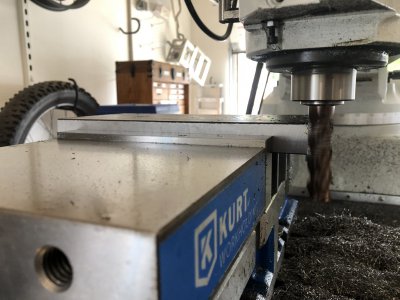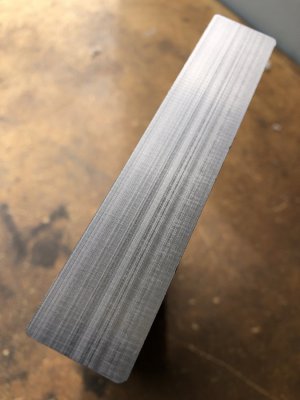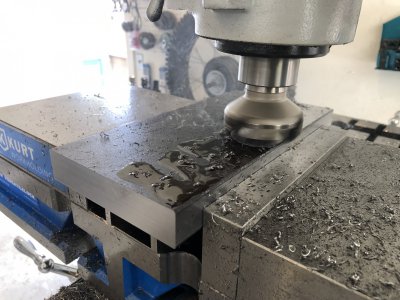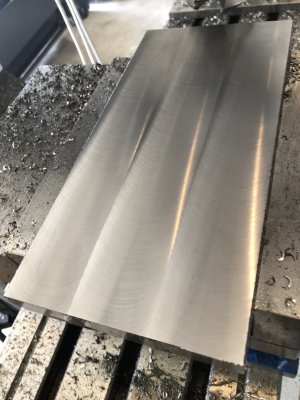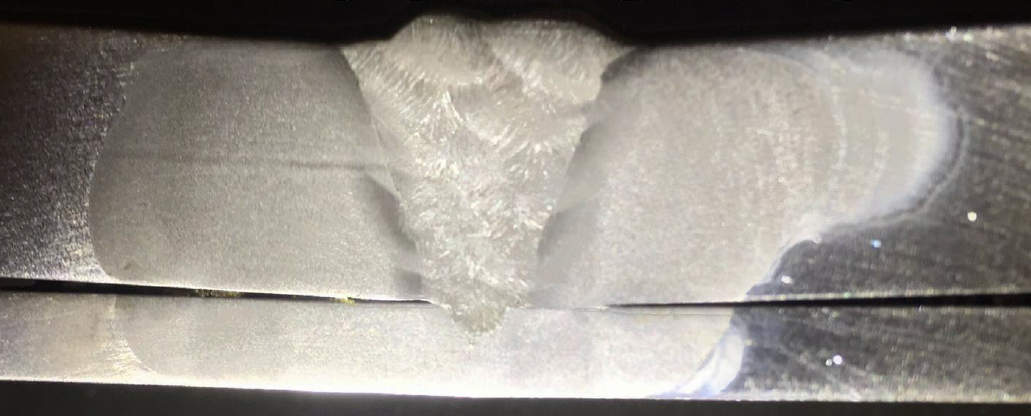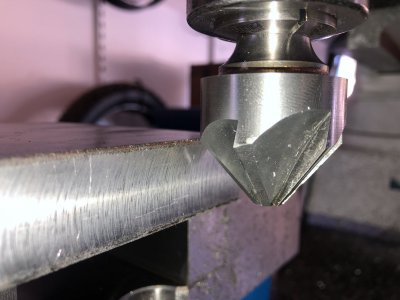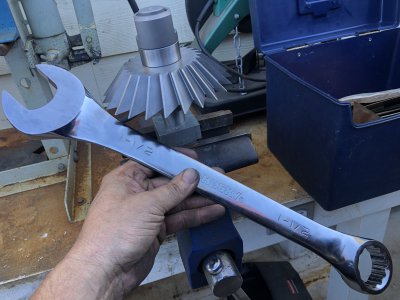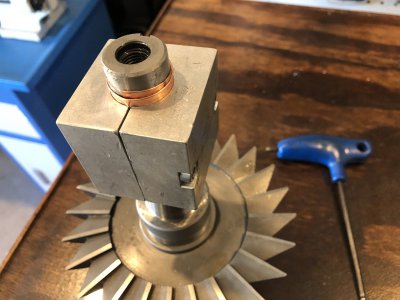- Joined
- Sep 8, 2019
- Messages
- 4,392
I know I sound like a broken record always talking about welding coupons. Here I am uploading in real time what I am doing.
Since I will be doing this over & over again, maybe somebody can provide some constructive criticism.
This is my first step. I put the A36 plate in like this & took off .015”. This cutter is a carbide insert 2 inch face mill. One lubricated pass at 900 RPM at about 13 ipm, & then a dry spring pass at 1200 RPM at about 6 ipm.
I know it doesn’t need to be great because it is a welding coupon, but I’m also taking the opportunity to hone my machining skills & learn to get a good surface finish.
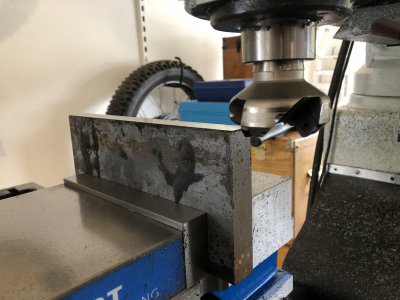
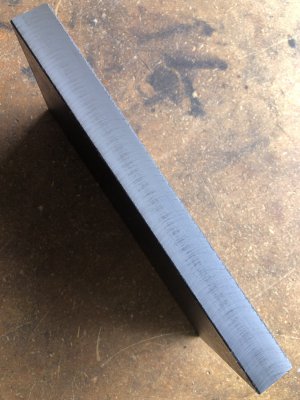
I will do the opposite opposite side the same way, & there is no need to show that.
Since I will be doing this over & over again, maybe somebody can provide some constructive criticism.
This is my first step. I put the A36 plate in like this & took off .015”. This cutter is a carbide insert 2 inch face mill. One lubricated pass at 900 RPM at about 13 ipm, & then a dry spring pass at 1200 RPM at about 6 ipm.
I know it doesn’t need to be great because it is a welding coupon, but I’m also taking the opportunity to hone my machining skills & learn to get a good surface finish.


I will do the opposite opposite side the same way, & there is no need to show that.
Last edited:


